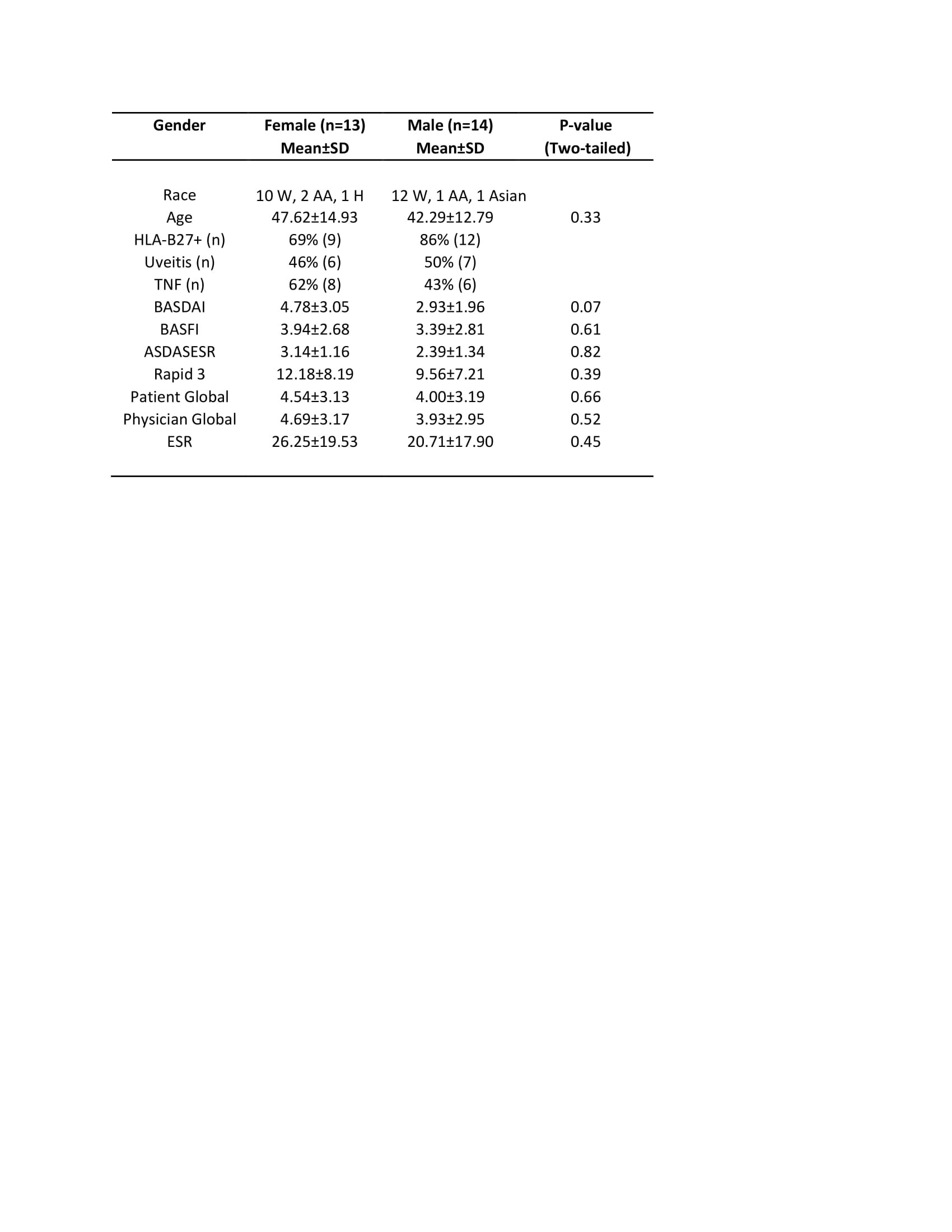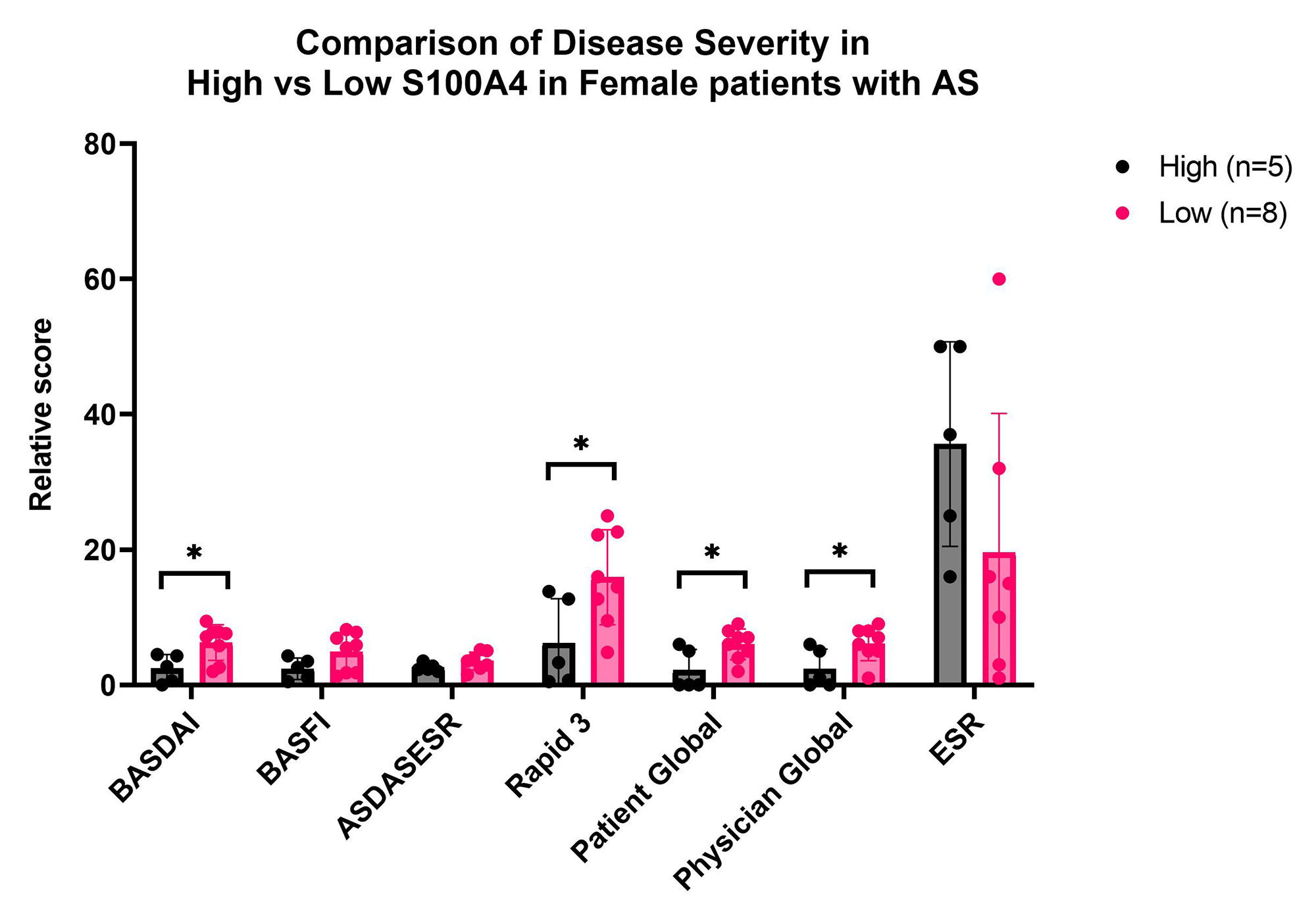Session Information
Session Type: Poster Session C
Session Time: 1:00PM-3:00PM
Background/Purpose: S100 proteins are a family of 25 calcium-binding cytosolic proteins which are involved in stress and inflammatory responses. S100A4 acts as a negative regulator of bone formation, where previous studies have shown increased plasma levels of S100A4 in patients with axial spondyloarthritis (axSpA) and higher in those without syndesmophytes. The S100A4 levels inversely correlated with disease duration and had a weak inverse correlation with radiographic damage. Similarly, S100A12 is one of the phagocyte-specific inflammatory S100 proteins which activate intracellular pro-inflammatory pathways via receptor for advanced glycation end products (RAGE). Given that ankylosing spondylitis (AS) is more frequently diagnosed and presents with higher radiological progression in men, we compared the plasma levels of S100A4 and S100A12 in male versus female patients with AS to better understand the molecular mechanisms behind the gender difference.
Methods: Peripheral blood samples (30mL) were obtained from 13 female and 14 male subjects ≥18 years of age with AS based on modified New York diagnostic criteria as well from 14 control subjects at the Clinical Research Unit of MetroHealth Medical Center per approved IRB protocol. Plasma was separated by immediate centrifugation following blood collection in EDTA-containing tubes and S100A4 and S100A12 were measured by ELISA kit CircuLex (MBL Life Science). Statistical analyses were performed by one-way ANOVA or Kruskal-Wallis test with appropriate post-tests, with statistical significance set at P < 0.05.
Results: There was no difference in male versus female AS cohort, including overall disease burden (Table 1). However, plasma levels of S100A4 were significantly elevated in female patients only, not in the male patients. On the other hand, plasma levels of S100A12 showed an opposite pattern, where it was more elevated in males (Figure 1). Consistent with previous findings of S100A4 acting as a negative regulator of bone formation, sub-analysis of arbitrary ‘High’ versus ‘Low’ S100A4 groups of female patients by S100A4 levels and disease burden showed that higher levels of S100A4 tended to be associated with lower disease burden (Figure 2).
Conclusion: In this preliminary analysis, we show that male and female AS patients may have differing inflammatory mediators. Similar to the previous study which showed an increased circulating levels of S100A4 in AS patients especially during the early stages, we have found that S100A4 levels are elevated in female AS patients, with higher levels associated with less radiographic progression.
To cite this abstract in AMA style:
Lee C, Haghiac M, Magrey M. Differential Plasma Levels of S100 Proteins in Male versus Female Patients with Ankylosing Spondylitis [abstract]. Arthritis Rheumatol. 2022; 74 (suppl 9). https://acrabstracts.org/abstract/differential-plasma-levels-of-s100-proteins-in-male-versus-female-patients-with-ankylosing-spondylitis/. Accessed .« Back to ACR Convergence 2022
ACR Meeting Abstracts - https://acrabstracts.org/abstract/differential-plasma-levels-of-s100-proteins-in-male-versus-female-patients-with-ankylosing-spondylitis/



